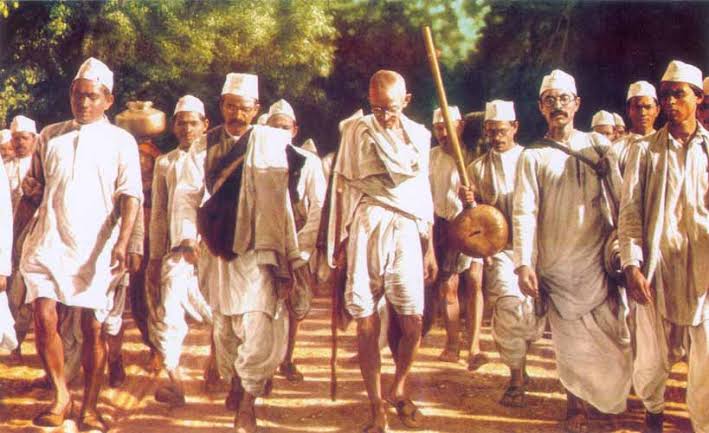Information on Dandi March

Article By: Aaradhana Umesh, Std.9, Porur.
On March 12, 1930, a significant moment in Indian history unfolded as Mahatma Gandhi embarked on the Dandi March. Leading a group from his ashram in Sabarmati, Gandhi began a journey that would ignite the spirit of the nation. With 80 dedicated followers by his side, Gandhi set out with a clear purpose – to challenge the oppressive salt tax imposed by the British colonial rulers. Along the path from Sabarmati to Ahmedabad, thousands of eager onlookers gathered to witness this historic event, drawn by Gandhi’s message of nonviolent resistance and defiance against unjust laws.
Each day of the march, Gandhi addressed the crowds, passionately advocating for independence and condemning the government’s policies. His words resonated not only across India but also captured the attention of the world media. Foreign journalists flocked to cover the march, thrusting the Indian independence movement into the international spotlight and making Gandhi a globally recognized figure.
As the march progressed, more people joined Gandhi’s cause, swelling the ranks of the procession to around 50,000 by the time they reached Dandi on April 5. The following day, on April 6, Gandhi took a symbolic stand against the salt tax by personally breaking the law and making salt from seawater. Inspired by his actions, thousands of others followed suit, sparking a wave of civil disobedience across the country.
The effects of the Dandi March were profound and far-reaching. Around 60,000 people, including Gandhi himself, were arrested by the British authorities. Despite attempts to suppress the movement through censorship and repression, the spirit of resistance persisted. The Dandi March not only galvanized the Indian populace but also demonstrated the power of nonviolent protest in challenging imperialism and paving the way for eventual independence.











Leave a Reply